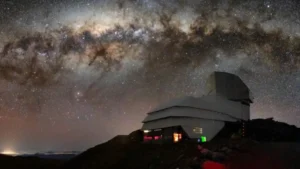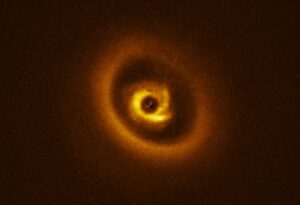The Radcliffe Wave is a giant chain of stars in the shape of a wave. New research shows that the cosmic structure is not just wave-shaped. It undulates up and down as it moves through the galaxy.
Researchers discovered the giant wave in 2020 while trying to map out the 3D positions of stellar nurseries. The Radcliffe Wave stretches over 9,000 light-years and is the biggest known structure in the Milky Way.
This wave lies only 500 light years from us, a relatively short distance in the world of space. It is so close to us that for a long time, it was hard to see the clusters of stars as part of something larger. A forest for the trees problem.
“It’s really hard to see what the structure of your hand is if you put it very close to your face,” study coauthor Alyssa Goodman explained to The Washington Post.
A traveling wave
The slithering wave of stars was first found as part of the Gaia project. Run by the European Space Agency, it aims to fully map the Milky Way. The Gaia spacecraft follows Earth’s orbit around the Sun, creating a 3D map of all the stars and structures. It also measures their motion.
The initial data proved the existence of the structure. Later observations showed that it is moving through the galaxy as a “traveling wave.” Superficially, it resembles the synchronized wave that sports fans do in stadiums.

The Gaia spacecraft. Image: European Space Agency
Earlier papers on the Radcliffe Wave suggested that it was in motion but couldn’t prove it. This research team has now used the motion of baby stars within the structure to show that the wave constantly oscillates up and down. The Gaia spacecraft detected the movement by tracing how natal gases from the newly formed stars move.
The second big discovery is that 13 million years ago, the wave “washed over” the Earth. There may even be signs of this in the geological record. The Earth’s magnetic fields and its heliosphere protect us from many cosmic events. The heliosphere is a huge protective bubble created by solar wind.
If the wave passed closely enough, exploding stars within these star-forming clouds would have compressed the bubble. This would have showered the Earth with iron isotopes. That is what researchers are going to start looking for in the geological record.






